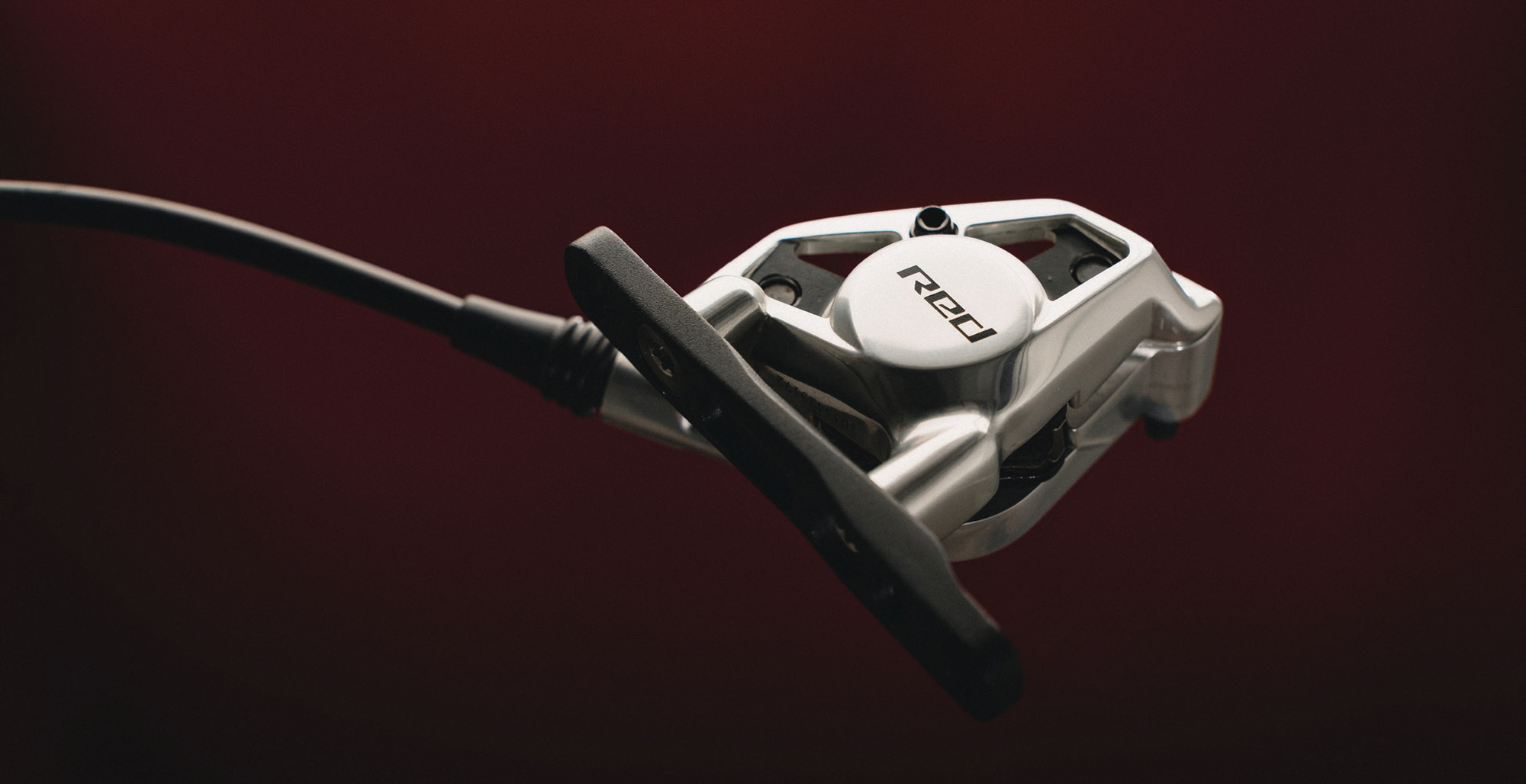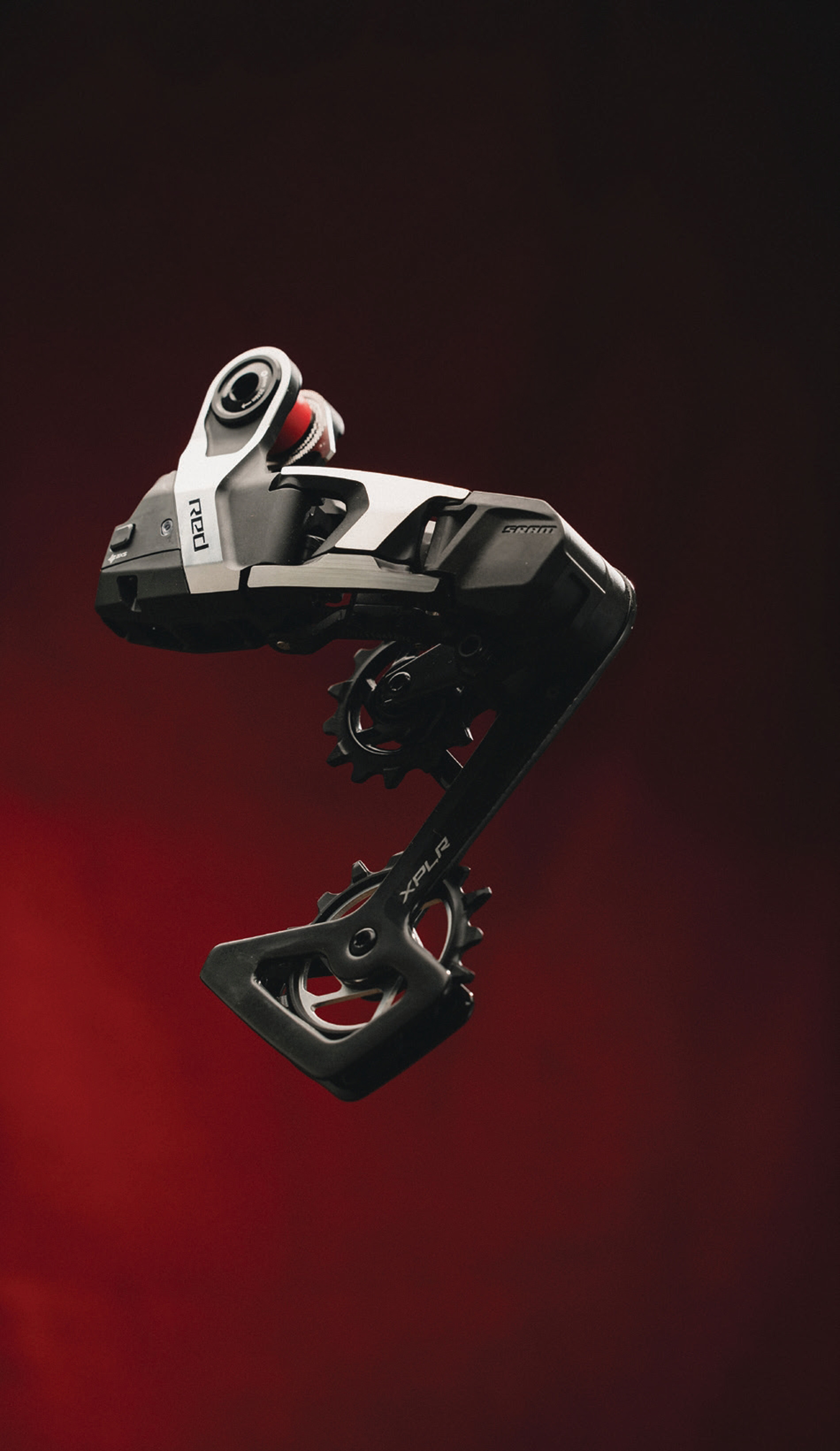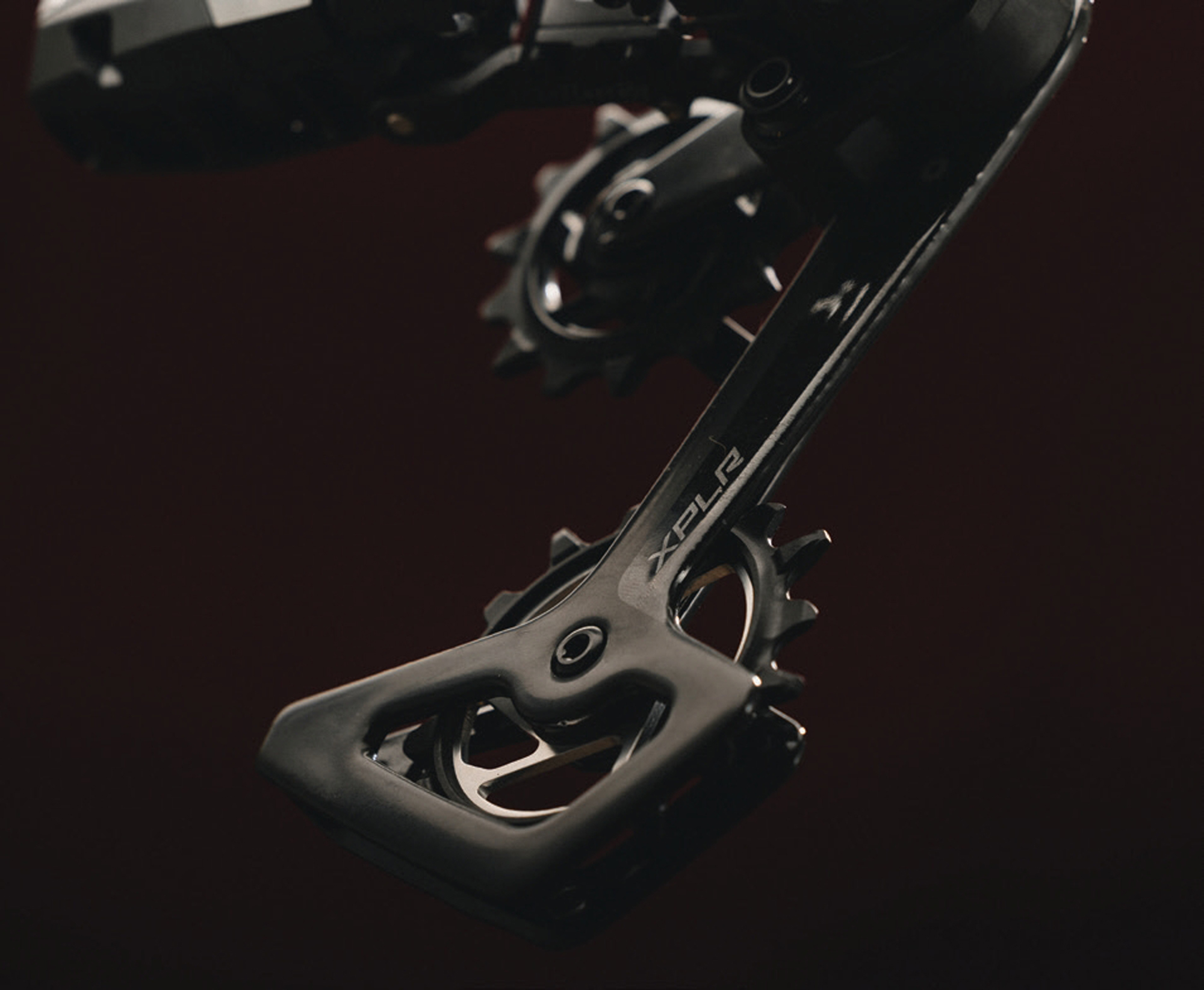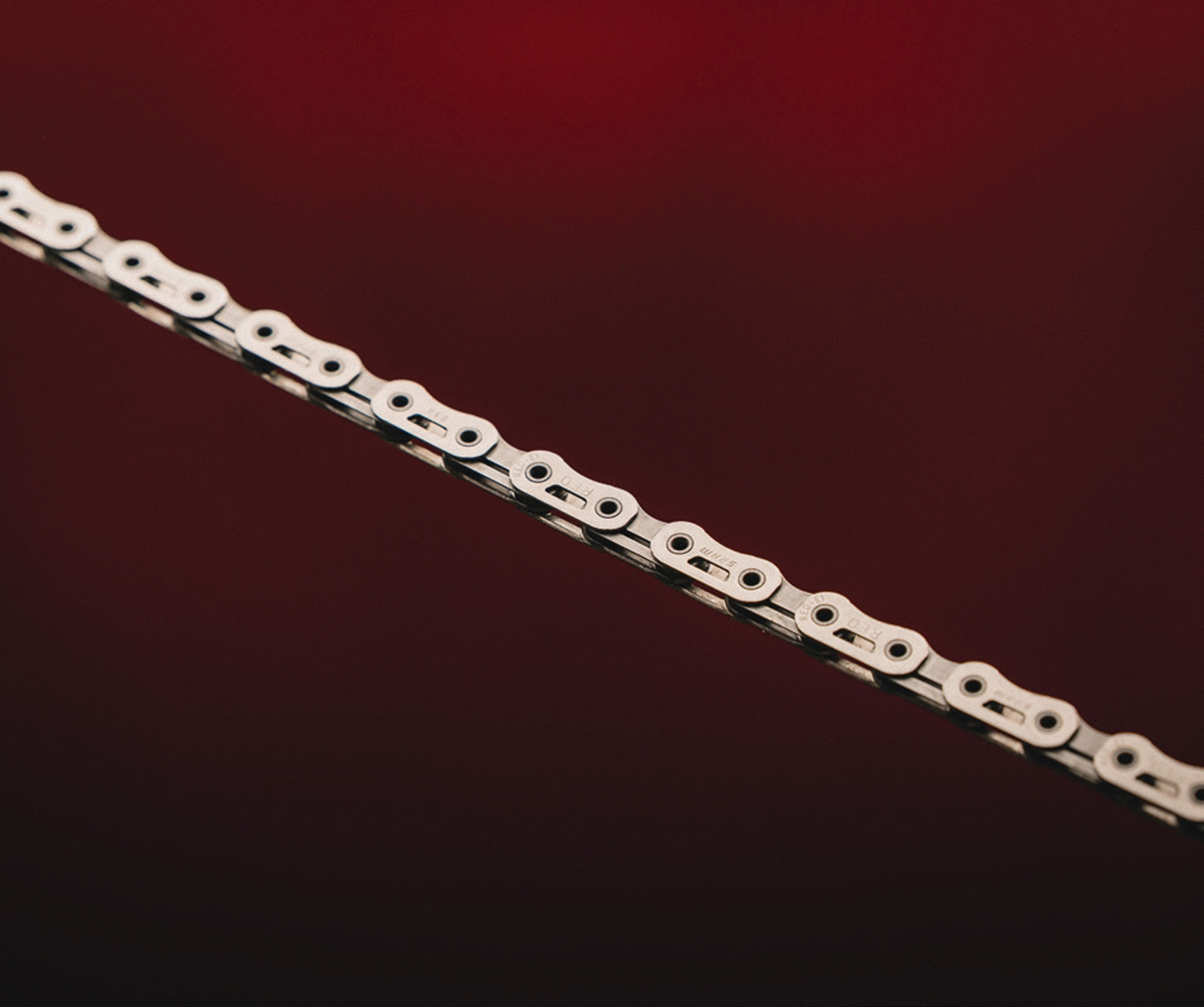Words Liam Friary
Images Cameron Mackenzie
RRP Crank with chainring from $1,180 | Cassette $1,348 | Derailleur $1,501
Brakes/Shifters and Karoo Hammerhead $3,860
Distributor Worralls
The only thing that is constant is change, and the cycling industry epitomises this principle. The reasons behind change are varied but fundamentally it’s about innovation.
Riders demand more of their equipment and provide feedback to brands via pro riders, bike shops, wholesalers and data collation through apps and other digital tools. SRAM is no stranger to change, innovation, and rider feedback – in recent times, they have been on a roll with releasing new products. Their latest offering is the new SRAM Red XPLR groupset that aims to set new standards within gravel racing and riding.
Let’s go over the changes to this new groupset. Firstly, the clear standout is that it’s now 13-speed, and while SRAM aren’t the first to go there (Campagnolo beat them to it), they have added another gear with the removal of the derailleur hanger via UDH (Universal Derailleur Hanger) full mount interface. I think this is a very good step forward. Like our mountain bike counterparts who have now done the same (removed the rear derailleur hanger) with SRAM Eagle Transmission, gravel riders too venture off- road and into some gnarly terrain, so removing this flimsy piece of metal is worth it. There are also huge benefits with precise shifting performance, better durability, resistance to impact, reduced gear tuning, and much less stressful bike air travel.
SRAM has made significant strides in weight reduction with their new RED XPLR groupset. The latest iteration, including a power meter, weighs in at a svelte 2,488 grams. This represents an impressive 87 gram reduction from its predecessor, the RED XPLR eTAP AXS, which tipped the scales at 2,575 grams. To put this into perspective, SRAM’s Force XPLR AXS groupset, positioned as a more affordable option, weighs 2,715 grams.
These weight savings are particularly noteworthy when considering that they include a power meter for the RED versions. The 227 gram difference between the new RED XPLR and the Force XPLR AXS underscores the premium nature of the RED line. For weight-conscious riders and racers, these reductions could translate to meaningful performance gains, especially over long distances or in hilly terrain. SRAM’s commitment to shaving grams off while maintaining or improving functionality demonstrates their focus on meeting the demands of high-performance gravel riding and racing.
Staying with the new RED XPLR rear derailleur; it’s been built specifically for gravel riding. As mentioned, it withstands abuse and offers supreme shifting thanks to the hangerless interface and full mount body from SRAM’s T-Type system. If you happen to encounter flying debris, such as a stick whilst gravel riding, or if an airline baggage handler throws your bike box into the plane, the new derailleur has been built to withstand these impacts and keep functioning. This is partly because the derailleur directly mounts to the bike’s axle rather than to a separate hanger. The body can pivot on the clutch mechanism out of the way upon impact and then be easily reset with a simple backward pull. I can attest to having suffered a few broken derailleur hangers in my time, thanks to airline travel and one infamous bikepacking trip where I ended up shifting gears by hand. So, its removal is welcomed.
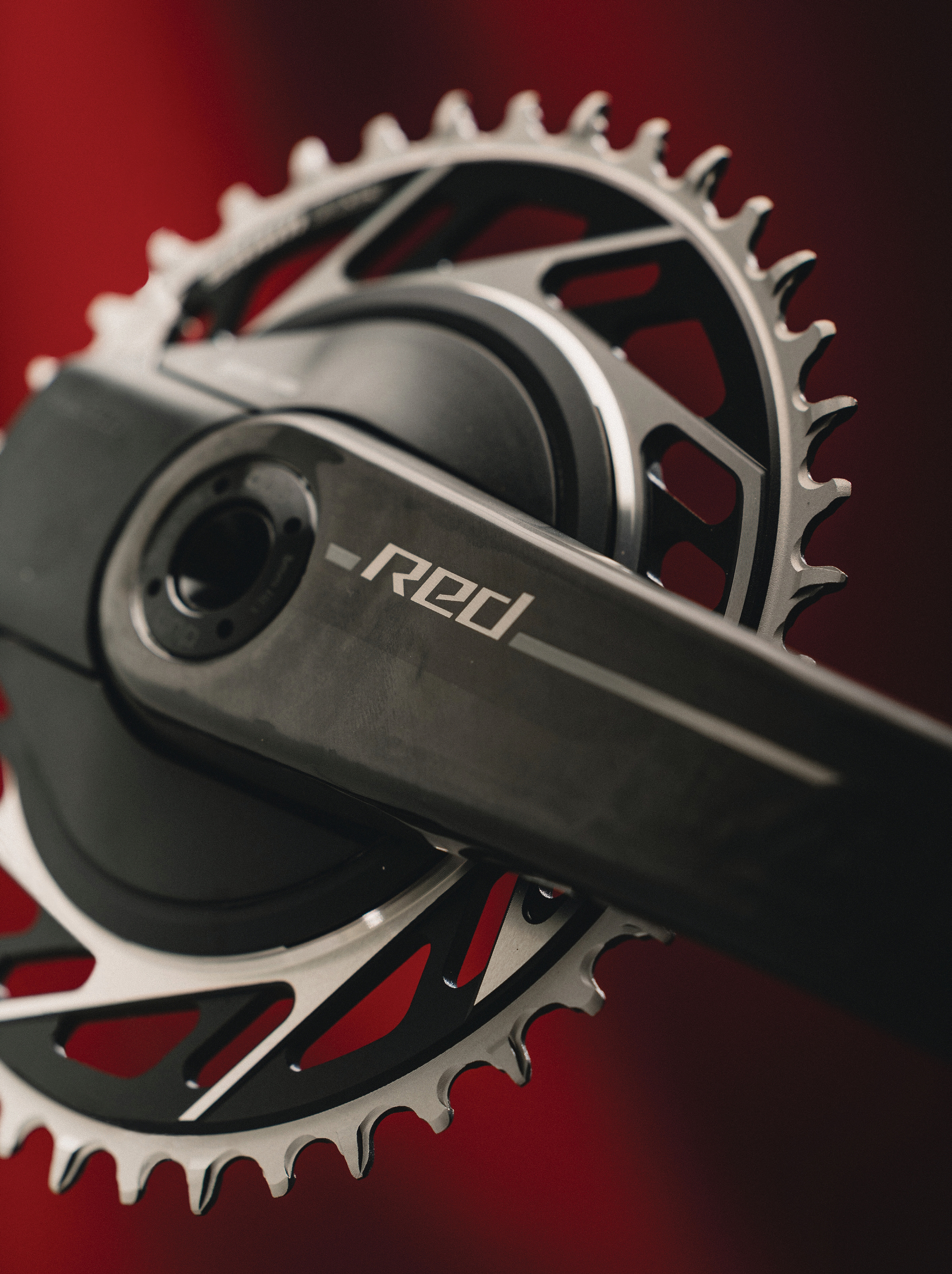
Moving onto the cassette; the new RED XPLR 10-46 cassette is 90g lighter than the Force XPLR 10-44, despite having an extra cog. I should note that it’s also on the same XDR freehub body. At the outer end, the UDH interface provides extra installation space, while at the inner end, the large 46-tooth sprocket extends beyond the freehub body, over the rear wheel. The angle of the spokes provides enough space. Basically, SRAM have just found a way to best utilise all the space available. And this is all on the same 12-speed chain which makes it cross compatible with SRAM’s AXS 12-speed groupsets such as Force AXS and Rival AXS. So, you could run the RED XPLR AXS rear derailleur with these shifters or chainset, but the frame does need to be UDH compatible.
RED XPLR only offers this 10-46 option, which SRAM deems sufficient for its target gravel racing audience when paired with large chainrings. While this range suits most gravel races, steeper terrain, exploration rides or loaded bikes might benefit from a 10-48 cassette or a larger 10-52 cassette. Nevertheless, the 46T big cog improves upon the previous 44T maximum. I will note that the new RED shifters, like with all SRAM AXS, can be paired with a mullet set-up. But this really depends on your riding preferences. With the wider, lighter, and tighter shifting ramps of the new RED XPLR cassette it really chases the higher performance realm.
Onto the cranks, the RED XPLR uses the same cranks, arms and interfaces as the new 2x RED AXS. The hollow carbon crank arms accommodate Thread Mount chainrings (non-aero from 38T-46T) and an optional threaded power meter spider, making power meter upgrades straightforward. Speaking of the power meter, I can see many riders opting for it as power has grown in popularity over the years. And there’s minimal weight when adding the meter to the crank. SRAM’s crank power meter claims ±1.5% accuracy and is compatible with various head units, including their Hammerhead Karoo, Garmin, and Wahoo. Crank arms are now available from 175mm to 160mm. Chainrings require a special Thread Mount tool to install and are designed to maximise tire clearance with high stiffness and shift accuracy.
SRAM has simplified crank widths, adopting a 47.5mm chainline for the 1x RED system with the DUB Wide spindle. This differs from the standard DUB spacing used in most 2x road applications, accommodating wider tyres and offering a more stable riding platform over rough terrain.
Lastly, onto the shifter hoods and brakes; the new RED XPLR shifters come with ‘bonus buttons’ that can be programmed for various functions. Initially set as auxiliary shifters, they can be reconfigured using the SRAM app to control ANT+ devices or actuate a Reverb dropper post. The AXS system can incorporate up to eight wireless blips, which makes for good personal customisation.
RED brakes require 80% less force when braking from the hoods and 30% less from the drops compared to previous versions, partly due to improved calipers. The polished silver units are lighter and stiffer, with increased pad clearance – to reduce rotor rub – and slightly wider spaced pistons. Utilising the HydroHC platform, RED brakes offer impressive power and modulation.
I was fortunate enough to ride this groupset aboard the new Trek Checkmate (featured in this issue) when the bike launched. After about two months of riding the new RED XPLR groupset, several features stood out.
The closer shifting ramps were immediately noticeable, especially on tarmac transfers to gravel sections. I could maintain a solid, constant cadence even with larger tyres. With other gravel derailleurs and cassettes, including some from SRAM, you’re often left searching for a gear that isn’t there, forcing a compromise. This is more evident when not on rough terrain, as you’re often rolling faster, which calls for a larger gear. Conversely, you also need a very easy gear for tackling serious off-road terrain. The sharp shifts and better gaps between gears on the new RED XPLR were welcome improvements.
I found the same benefits on gravel roads, whether flat or undulating. However, when the terrain tilted up steeply, I sometimes searched for another higher gear. While I understand this groupset is designed for all-out gravel racers, these courses (and training rides) often encounter steep grades. I found the range of 10-46T sufficient for the most part but would welcome a 10-48 option in the future. Of course, my riding these days leans towards the rowdier end and is less performance focused.
Neverthetheless, I was impressed overall, and the gearing definitely helped me achieve and maintain speed more efficiently. Across rough terrain, the new clutch keeps the long derailleur cage on a short leash, preventing excessive chain jumping. The hood shape is much sleeker than its predecessors, offering a more ergonomic feel and better comfort. The light, subtly profiled rubber felt nice without gloves and didn’t irritate my hands. The handy addition of the ‘bonus buttons’ proved useful. Initially skeptical, I found myself using them frequently. So much so that when I returned to my other bike without them, it felt strange. The new shifters allowed for a better hand position: index fingers on the brakes, thumb on the bonus shifter, three fingers on the handlebar. This improved positioning is possible due to the significantly stronger and more powerful braking compared to previous iterations.
In conclusion, the SRAM RED XPLR groupset represents a significant leap forward in gravel- specific componentry. The shift to a 13-speed system, coupled with the innovative Universal Derailleur Hanger (UDH) full mount interface, offers riders a wider range of gears with smoother transitions. Of course, there’s the issue of having a UDH specific bike and I would imagine more riders would have this groupset on a new bike rather than upgrade simply due to their current bikes not being compatible with UDH. The redesigned rear derailleur, built to withstand the rigors of off-road riding, demonstrates SRAM’s commitment to durability and performance. The refined hood shape, enhanced braking power, and the addition of programmable ‘bonus buttons’ all contribute to improved ergonomics and control, especially in challenging terrain.
While the 10-46T cassette range suits most gravel racing scenarios, some riders might desire an even wider range for extremely steep terrain. Nevertheless, the overall performance of the RED XPLR groupset, from its precise shifting to its robust construction, makes it a formidable choice for serious gravel enthusiasts. The integration of power meter compatibility and the potential for wireless customisation via the AXS system further solidify SRAM’s position at the forefront of gravel cycling technology. As the gravel discipline continues to evolve, the RED XPLR groupset stands as a testament to SRAM’s innovative approach to meeting the demands of this dynamic and challenging cycling category.
As with any top-tier component group, the SRAM RED XPLR comes with a premium price tag that reflects its cutting-edge technology and performance. While the cost may be prohibitive for some riders, it’s important to consider the value proposition. The groupset’s durability, precision and advanced features could potentially offer long-term savings through reduced maintenance and increased longevity. For professional racers, committed enthusiasts, or those seeking the pinnacle of gravel performance, the investment may be justified by the marginal gains and reliability it provides. However, budget-conscious riders or those new to gravel cycling might find better value in SRAM’s lower-tier offerings, which still benefit from trickle-down technology. Ultimately, the decision to invest in RED XPLR will depend on individual priorities, riding style, and financial considerations.
I’ll be conducting a long-term test of SRAM RED XPLR on a new bike build project, which will be featured in our next issue. Stay tuned for more in-depth insights and performance analysis.


